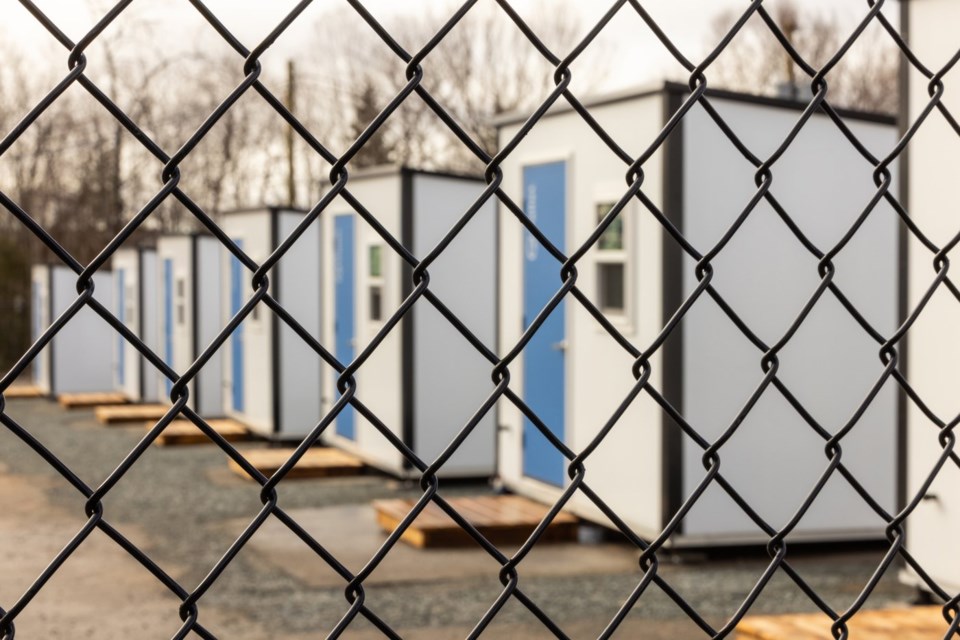HALIFAX — One major step that Nova Scotia can take to reduce homelessness is by addressing the "pathways" that lead vulnerable people to end up on the street, the head of a shelter for women and children said Tuesday.
Fixed-term leases and so-called “renovictions” are two of those pathways, Sheri Lecker, executive director of Adsum for Women and Children, told a legislature committee in Halifax. A fixed-term lease allows a landlord to raise the cost of rent well beyond the province’s five per cent cap, and a renoviction is a term to describe when a tenant is forced to leave their unit for renovations.
Both of those problems are not new, but they can be resolved with political action, Lecker said, adding that homelessness in Nova Scotia has "exploded" in recent years.
"We have to acknowledge that those are policies that could be addressed," she said.
After the meeting, Lecker said that another issue impacting housing affordability is that the rules on rent caps aren't tied to a housing unit — if a tenant leaves an apartment or house, the landlord can dramatically raise the rent for the next person who leases.
As well, Lecker said not everyone who is unhoused is represented in official data and homelessness goes well beyond the tents that can be seen around the city. She referred to a list by the Affordable Housing Association of Nova Scotia, composed of 1,286 people who self-reported being unhoused in the Halifax municipality last week. That data, she said, is not a full representation of the local homeless population.
There are at least 197 children in unstable housing who are excluded from the list, she said, adding that many more people are considered "hidden homeless" and do not self-report as being unhoused.
Lecker told the legislative committee that health and the housing crisis cannot be treated as separate issues, and that safe, stable housing is needed first in order to improve the health outcomes of Nova Scotians.
"Housing is health care — it is the foundation of all of our lives," Lecker said, adding that in order for people to make appointments to address their health needs or recover from a health issue, they first need a roof over their heads.
National research shows that homeless Canadians, compared with people who are housed, are likely to be sicker for longer when they become ill, and their emergency room visits last longer and cost more.
Joy Knight, a senior official with the Department of Health, said Tuesday that Nova Scotia's emergency room data reflects that research. On average, the emergency room visit of an unhoused person costs $20,000 compared to $10,000 for someone in secure housing, Knight said.
"The reason for that is because there's a longer length of stay. If you're homeless we don't want to make you leave when you may have nowhere to go," Knight told reporters after the meeting.
Also speaking before the committee Tuesday was Marie-France LeBlanc, CEO of North End Community Health Centre, which runs a primary health-care program for people in Halifax who are experiencing homelessness or insecurely housed.
LeBlanc said there are about 1,980 patients regularly seen by the clinic's team, composed of nurses, social workers, a nurse practitioner, and three physicians, who work at the clinic part-time in addition to other responsibilities. That number is on top of another 5,000 patients in their clinic program, which provides long-term health care for people who have transitioned out of homelessness into more secure housing, she said.
"And then there's another 4,000 people that, if they show up (seeking care), we're going to see," LeBlanc added.
"We don't turn anyone away right now, because the people that we see have been facing barriers their whole life. And so when they come to us we're not going to be another barrier," she told reporters.
The organization is also currently providing housing to 200 people, and has plans to open another 37 housing units in March.
This report by The Canadian Press was first published Aug. 13, 2024.
Lyndsay Armstrong, The Canadian Press




